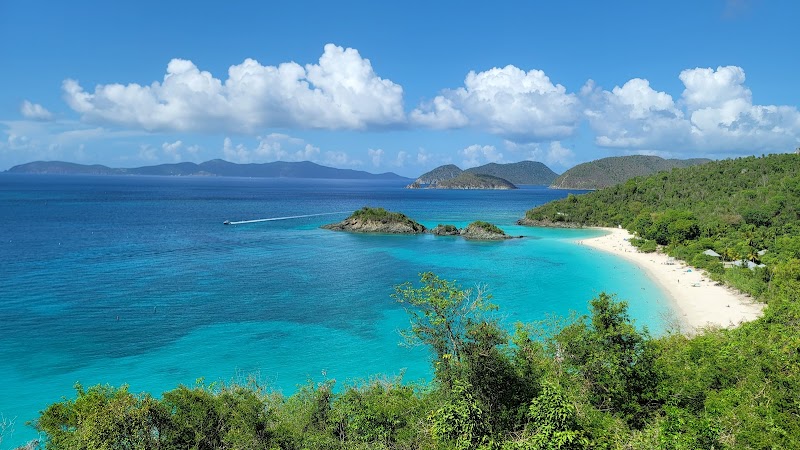Paddle Through Paradise: Kayaking Adventures Near Fajardo, Puerto Rico
Experience kayaking near Fajardo, where turquoise waters and mangrove trails invite adventure seekers of every skill level. Explore bioluminescent bays, coastal routes, and vibrant ecosystems while enjoying practical tips on planning your perfect paddle.
Choose the Right Time of Day
Morning light ensures calmer waters and fewer crowds, while evening paddles offer stunning sunsets and bioluminescent displays. Plan accordingly.
Pack Water and Sun Protection
Hydrate well and wear a hat and reef-safe sunscreen. The tropical sun can dehydrate and burn quickly during your paddle.
Wear Suitable Footwear
Closed-toe water shoes protect feet on rocky shores and slippery launches, providing grip and safety during embarkation and disembarkation.
Respect Local Wildlife and Ecosystems
Maintain a safe distance from marine life and avoid disturbing mangrove roots or coral reefs. Your respect helps preserve these delicate habitats.
Paddle Through Paradise: Kayaking Adventures Near Fajardo, Puerto Rico
Discover the thrill and tranquility of kayaking near Fajardo, Puerto Rico, where turquoise waters meet lush mangroves and vibrant coral reefs. This coastal town is a gateway to some of the most accessible and rewarding kayaking routes in the region, offering paddlers of all levels a chance to connect with nature and navigate waters shaped by playful currents and daring tides. Whether you’re gearing up for a calm lagoon paddle or aiming to explore the bioluminescent bays after sunset, Fajardo’s kayak options provide a perfect mix of adventure, practicality, and unforgettable views.
Fajardo’s kayak tours take you through a network of waterways that challenge the body and reward the senses. Expect to maneuver through towering mangrove forests where the foliage leans intriguingly over the water, daring you onward. The currents push you gently along sheltered channels perfect for beginners, while open coastal routes offer moderate excitement for seasoned paddlers. Many operators provide all necessary gear, including paddles and life vests, plus guides who know the nuances of these waters intimately.
Planning your kayak trip in Fajardo is straightforward. The best times to paddle are during the dry season months, from December through April, when waters are calm and weather remains predictable. Bring waterproof bags for essentials; hydration is crucial since the tropical sun can sneak up fast. Many tours end near iconic spots such as the stunning Isla Nena or the ethereal bioluminescent bays where after-dark paddling lights up the water beneath each stroke.
Keywords like “kayak Fajardo,” “bioluminescent kayak tours,” “Fajardo kayak rentals,” and “outdoor adventures Fajardo” rank high in searches, emphasizing the accessibility and excitement surrounding this destination. Designed for both family-friendly outings and more intensive kayaking excursions, the coastal environment here invites you to engage with the water as more than just a background but as a force that demands respect and offers exhilaration in equal measure.
Below, you’ll find local trips and excursions ready to elevate your outdoor experience in Fajardo. From guided kayaking tours through mangroves to combined paddle-and-snorkel adventures, these options ensure your visit is packed with memorable encounters with this fiercely beautiful landscape.
Nearby Trips
All Adventures
Boat Charters
Water Activities
Adventures near Fajardo
Discover the unique and memorable adventures that make Fajardo special.
Frequently Asked Questions
What are the best kayak launch points near Fajardo?
Popular launch points include Las Croabas Lagoon, used for calm water paddling through mangroves, and the public beach at Seven Seas, ideal for ocean entry trips. Both locations offer kayak rentals and nearby parking.
Is it safe to kayak at night in the bioluminescent bays around Fajardo?
Night kayaking in the bioluminescent bays is safe when done with experienced guides who know the currents and regulations designed to protect this fragile natural wonder. Solo night paddling is discouraged due to limited visibility and wildlife sensitivity.
Are there unique wildlife species to see while kayaking?
Yes, paddlers can spot herons, mangrove crabs, and occasionally playful manatees near mangrove channels. Bird watching is excellent at dawn, with egrets and osprey commonly sighted along the water’s edge.
What’s the tide impact on kayaking near Fajardo?
Tides significantly affect water depth in mangrove areas and access routes to certain keys. Low tides expose mudflats and make some channels difficult to navigate, while high tides provide smoother routes but stronger currents.
Can beginners rent kayaks without guided tours?
Yes, several local outfitters allow kayak rentals for confident paddlers. However, novice kayakers are encouraged to join guided tours to navigate safely and learn about local ecosystem nuances.
Are there environmental rules to follow while kayaking?
Absolutely. Visitors must avoid touching or disturbing coral reefs, maintain distance from wildlife, and follow strict no-littering policies to protect the delicate balance of coastal and marine habitats.
Recommended Gear
Lightweight Paddle
A lightweight, durable paddle reduces arm fatigue during both calm and choppy water conditions.
Personal Flotation Device (PFD)
Safety equipment is mandatory; ensure it fits well and doesn’t restrict movement while paddling.
Waterproof Dry Bag
Keeps valuables and essentials dry even if you tip over or encounter splashes.
UV-Protective Clothing
Long sleeves and hats with UV protection shield skin from intense sun exposure during afternoon paddles.
Local Insights
Hidden Gems
- "Hidden mangrove tunnels accessible only on guided kayak trips"
- "Secluded beaches near Icacos Island reachable after a kayak paddle"
Wildlife
- "West Indian Manatees"
- "Brown Pelicans"
- "Blue Herons"
History
"Fajardo’s coastal waters have long served as transportation routes for indigenous Taíno communities and later colonial settlers, with mangroves providing natural shelter and resources."
